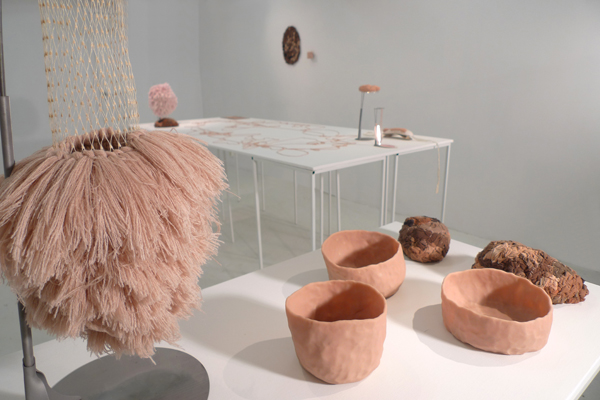
Susan Cummins: Please tell us the story of how you became a gallery owner in Stockholm.
Sofia Björkman: I took my MFA 1998 as a jewelry maker. At that time there were no galleries in Stockholm that supported graduating students and we knew very little about the international jewelry world. We learned how to make things but not what was waiting for us after graduation. So I had to start up something I believed in and where I felt free. In 1999, one year after graduation, I started up PLATINA together with two friends. Today I run it myself. After the studies we needed income. So we asked some interior designers to make a shop. We sold our jewelry and we asked artists we liked if we could sell their work too. A month later we did our first exhibition. PLATINA became a gallery, a shop and a studio but we did everything under the name PLATINA.
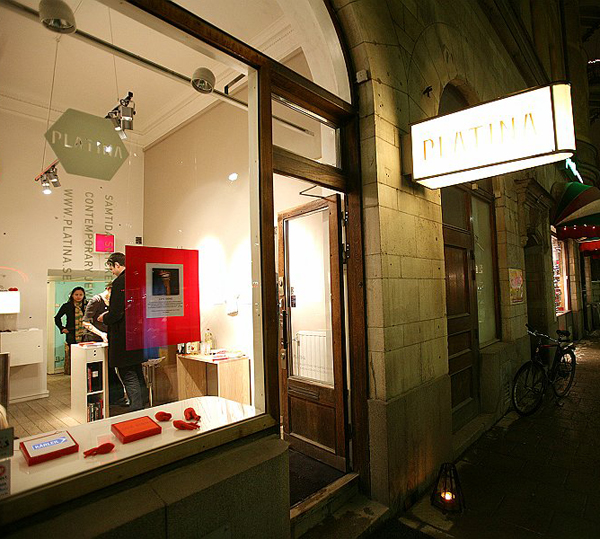
Susan Cummins: Please tell us the story of how you became a gallery owner in Stockholm.
Sofia Björkman: I took my MFA 1998 as a jewelry maker. At that time there were no galleries in Stockholm that supported graduating students and we knew very little about the international jewelry world. We learned how to make things but not what was waiting for us after graduation. So I had to start up something I believed in and where I felt free. In 1999, one year after graduation, I started up PLATINA together with two friends. Today I run it myself. After the studies we needed income. So we asked some interior designers to make a shop. We sold our jewelry and we asked artists we liked if we could sell their work too. A month later we did our first exhibition. PLATINA became a gallery, a shop and a studio but we did everything under the name PLATINA.
What is your space like and how do you use it?
Sofia Björkman: In the beginning of 2000 when I started up PLATINA the thought of a gallery that shows jewelry was far away. Instead we developed investigations, fashion shows, exhibitions in other non-gallery venues, installations in strange buildings and small shows in private buildings. We worked with theaters, with magazines and stylists, we made photography, video and we worked together with other art disciplines. For me, jewelry is more than the jewel itself. A jewel is not a jewel without its content and surroundings. During the past few years PLATINA has become more and more of a gallery and today I say Gallery PLATINA. I curate six to ten exhibitions a year and besides that I still do projects outside the gallery space. I think it is also important to understand that what we mean with the word gallery differs with languages and culture.
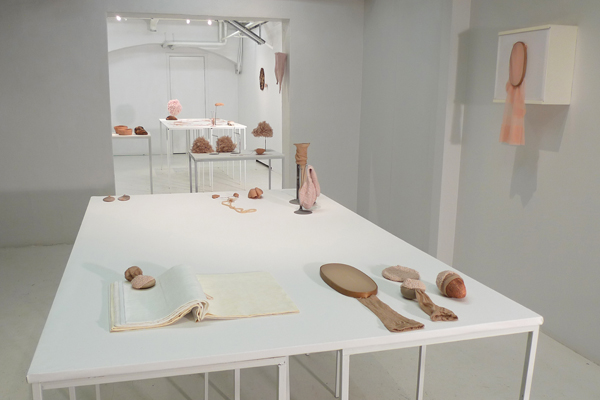
Sofia Björkman: As I said, in Stockholm at the time we started up, there was hardly any scene at all for jewelry art. The field was interesting during the 1980s but after that it was quiet. The last seven years it has started to be interesting again. Now there are more jewelry artists and more of them that have a name, both national and international. A lot of work that comes out is amazing! And I guess these works are/will be important for the history of jewelry. The government supports the jewelry art field but I think the field, as it looks now, is too young and experimental for the institutions, museums and the buyers, which mean it’s tough for the artists, especially the young artists. There are no collectors in Stockholm except for a few that are starting to buy more and more.
Do you interact with the Konstfack School very much?
Sofia Björkman: I have a good connection with Professor Karen Pontoppidan, but we haven’t worked together much. Hopefully we will do more projects together in the future.
How do you describe the jewelry you show?
Sofia Björkman: I choose work that I believe in and think has something to say. I try to find artists that have outstanding approaches to jewelry and who deal with the concept of jewelry in a personal way.
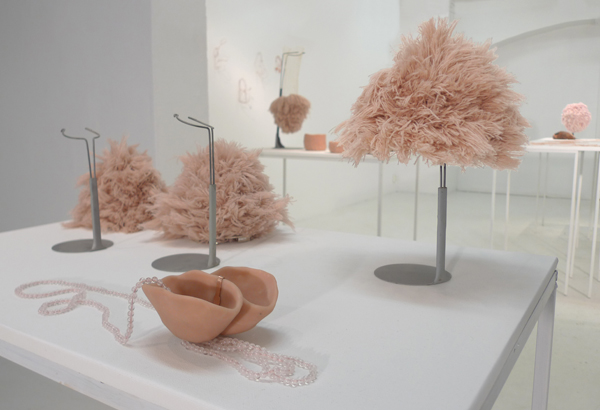
Sofia Björkman: I do hope that the field will be more accepted as an art form than it is at the moment. I do hope it will do that without losing its character of intimacy. I hope that more people will discover the language of jewelry art and what it can offer them.
Thank you Sofia. Iris Eichenberg’s show Sense Mapping looks like it contains just the kind of work you believe in. Iris, you are a graduate of the Gerrit Rietveld Academy and were a professor there for several years and now you are teaching at Cranbrook in the United States. What is one of your favorite assignments to give students that really engages their imagination?
Iris Eichenberg: I try to seduce the students to find their voice, in materials, in subject matter and in the realization of what materials can evoke. I aim to help them to trust in their idiosyncratic obsessions, likes and dislikes. I hope I can raise their consciousness to pay attention to subtle, underlying voices and make them listen. So the first assignment I give them is a list of 300 questions. I ask the students if they can remember the imprint of their parent’s knees in the carpet, kneeling in their parents living room watching a certain film, eating a special dinner on a certain Sunday, or the smell of their tears in an old cushion, the sound of the front door opening late at night, or the isolation next to the bathtub . . . And as I am writing this, I realize that also my last body of work has entered the same space just through the backdoor, which at first looked like a different space.
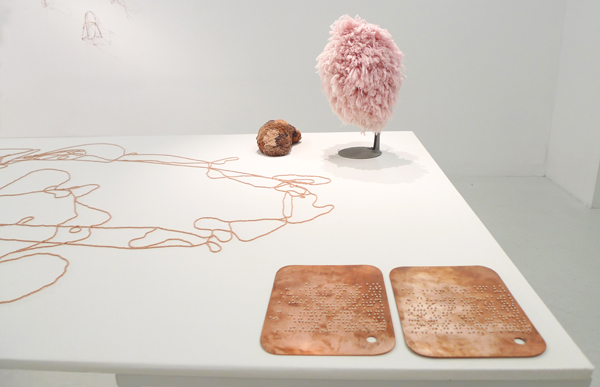
Iris Eichenberg: Cranbrook is different and it took me some time to precisely know how. I can move fast, I do not owe anybody an explanation and the needs and interests of the students can be met directly. We share experiences on all levels and the students carry their part of the responsibility to make the department a place where they can work, grow, make mistakes, learn and start their careers which is much more than just thoughtlessly consuming information. I am not just a role model in the ideal sense of the word. No, I am willingly sharing thoughts, mistakes and questions of my own practice.
You have beautifully displayed the jewelry and objects at Platina. The overall feeling is strongly female. There is plenty of pink, nylons, sagging breasts and suggestions of other female body parts. And yet the show is called Sense Mapping. Can you make some connections for me?
Iris Eichenberg: ‘Display.’ Hmm, I am not really happy with this word. I am not displaying work. I use the work to build a discourse by introducing different pieces to each other and making use of the interdependence of these pieces. And all that helps to undermine the attempts to read the work. I try to confuse the potential for a narrative and so at best I can make a literal reading impossible. As I mentioned before, my interest is to evoke a sensual reaction and to puzzle the viewer who tries to figure it out by the use of their sense perception. Sense mapping is a process, not an illustration nor a representation of the body. But there is only so much I can control. The need to categorize is a strong one and it is a rare viewer who allows him or herself to stay at the point of sensing rather than knowing. I like to work with material or color I dislike. Beautiful harmonious materials bore me. Skin colored panty hose in all their skin types are disgusting, but I search for the point where it tips over and is more than its sum.
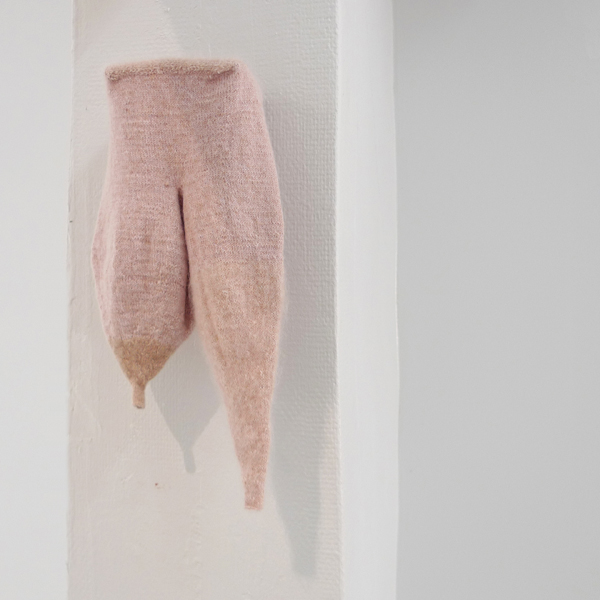
Iris Eichenberg: Words can explain, but I am not interested in explaining. The explanation would be always less than what I hope the work can do. So I try to give hints, open doors, trigger the sense perception and trust the fact that the viewer can always bring more to the work than I brought to it in the first place. I do not want to shut the doors but instead give the notion of an opening.
What are you currently reading?
Iris Eichenberg: Reading . . . that question is probably answered already. What I read and what it does to me is a lonely story and you could never look through my eyes. I often read and then need to make order of my perception. I am a strange reader.
Have you spent time traveling this summer?
Iris Eichenberg: The first moments of a trip are like the first words of a lecture. I know very fast if I am in it or if the journey will just be listening to myself or walking next to myself. Expectations are a killer for traveling so I try to go step by step. Sometimes I am successful and sometimes I should just go home. But an international trip would force me to wait for my flight back and weeks later when all my expe riences have dripped through big filter of distance it might have been worth it. This summer I went to Europe twice and mostly visited different countries, different endeavors and different ‘me’s. I was drawing lines to different periods of my life in a hopeless attempt to bring my new self back to an earlier context. It is the context, which is stronger and leaves me puzzled again and again.
